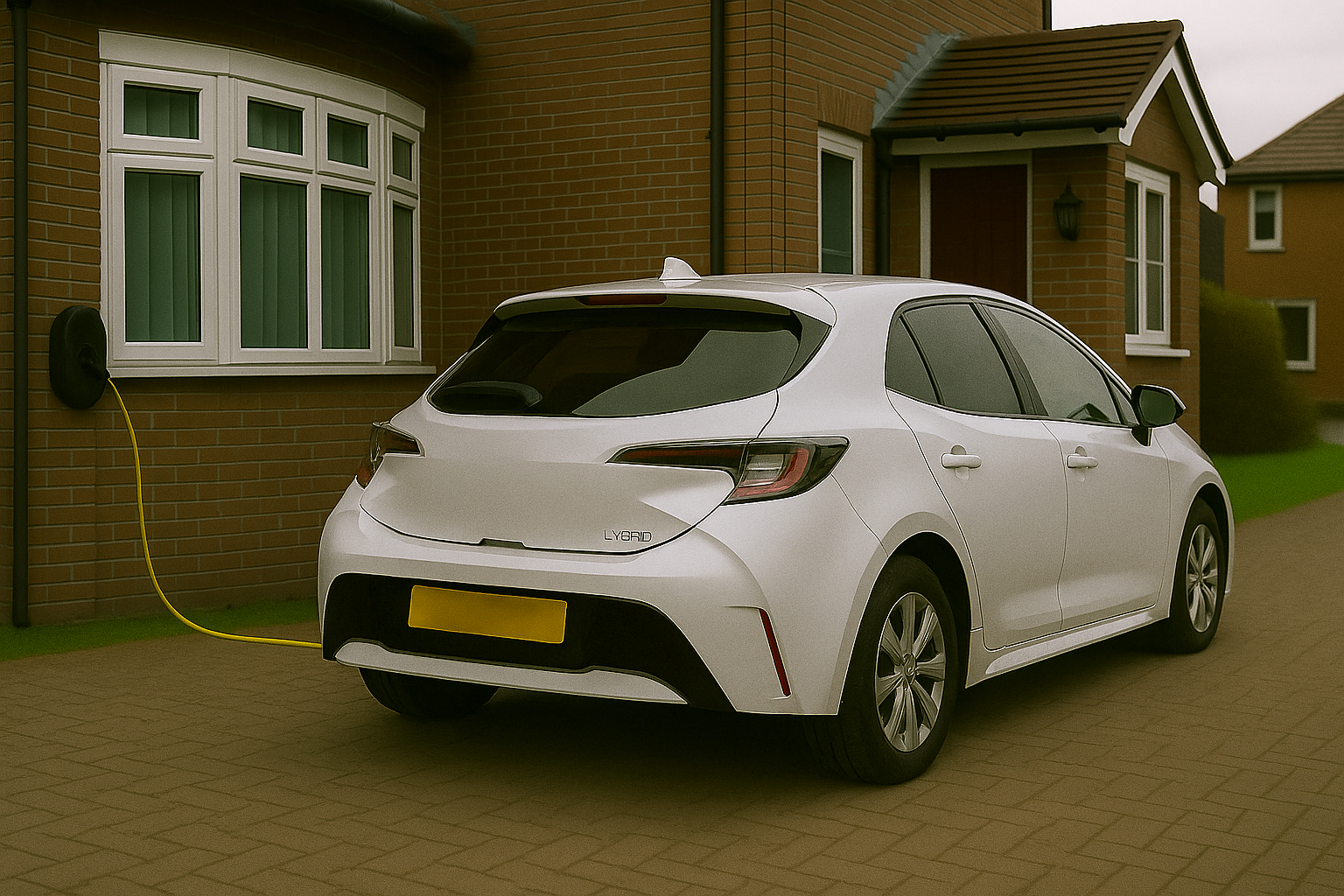What Does the Amber Engine Warning Light Mean on Your Dashboard?
When you’re driving along and an amber engine warning light suddenly appears on your dashboard, it can be both confusing and worrying. This little icon, often shaped like an outline of an engine or sometimes reading “Check Engine,” is one of the most common alerts in modern vehicles. Yet, many UK drivers aren’t sure what it really means, how serious it is, or what actions they should take next.
Understanding the amber engine warning light is essential for every motorist. It can help prevent expensive repairs, reduce the risk of roadside breakdowns, and keep your vehicle running smoothly. In this guide, we’ll explain what the amber engine warning light means, why it appears, and what you should do if it comes on — all from a UK driver’s perspective.
Understanding the Amber Engine Warning Light
The amber engine warning light, sometimes called the engine management light, is part of your vehicle’s onboard diagnostic system. It’s designed to alert you when the car’s computer detects a problem affecting performance, emissions, or efficiency. The system continuously monitors sensors across the engine, exhaust, and fuel systems, ensuring everything operates as intended.
When something goes outside normal parameters — even slightly — the system records a fault code and triggers the amber light. Unlike a red warning light, which often signals an immediate and critical issue, an amber light usually indicates a fault that needs attention soon rather than instantly. Think of it as a polite but firm reminder that your car wants a check-up.
Amber vs Red: Knowing the Difference
Modern dashboards use colour coding to indicate severity.
-
Amber engine warning light: A caution. The car has detected a fault but can usually still be driven carefully.
-
Red engine warning light: A stop signal. There’s a serious issue that may cause damage or make the vehicle unsafe to drive.
If you ever see a red version of the engine light or the amber light flashing, it’s safer to stop the vehicle as soon as possible in a suitable location and seek assistance.
Common Causes of the Amber Engine Warning Light
There are numerous reasons why the amber engine warning light may come on. Some are simple, while others require diagnostic testing to pinpoint the cause. Below are the most common culprits UK drivers encounter.
1. Loose or Faulty Fuel Cap
It might sound trivial, but an incorrectly tightened or damaged fuel cap is one of the most frequent triggers. A loose cap can allow fuel vapour to escape, confusing the emissions system and causing the warning light to appear.
2. Oxygen (Lambda) Sensor Fault
This sensor measures the amount of oxygen in the exhaust gases. If it fails or reads incorrectly, it can affect fuel efficiency and emissions. Replacing a faulty oxygen sensor is usually straightforward and prevents further issues.
3. Mass Air Flow (MAF) Sensor Problem
The MAF sensor controls how much air enters the engine. When it malfunctions, you might experience rough idling, poor acceleration, or reduced fuel economy — often accompanied by the amber light.
4. EGR Valve or DPF Blockage (Diesel Engines)
Diesel vehicles commonly develop problems with the exhaust gas recirculation (EGR) valve or diesel particulate filter (DPF). Short journeys or stop-start driving can cause soot build-up, leading to an amber warning.
5. Ignition Coil or Spark Plug Issues
For petrol engines, worn spark plugs or failing ignition coils can cause misfires. This not only triggers the warning light but also affects performance and emissions.
6. Catalytic Converter Efficiency
A failing catalytic converter can cause the amber engine warning light to appear. This component helps reduce harmful exhaust gases, and ignoring the warning could result in MOT failure.
7. Sensor or Wiring Faults
Sometimes, the light appears due to an intermittent sensor glitch or wiring problem rather than a serious mechanical issue. However, it’s still worth investigating because small electrical faults can worsen over time.
What To Do When the Amber Engine Warning Light Appears
1. Stay Calm and Assess the Car’s Behaviour
If the car feels normal — no loss of power, unusual noises, or smoke — it’s usually safe to continue driving carefully. Avoid high speeds or heavy acceleration until the fault is diagnosed.
2. Check Obvious Causes
Start with the basics. Ensure the fuel cap is secure, inspect visible wiring for damage, and listen for any unusual sounds. Sometimes, resolving a simple issue can cause the light to go off after a few ignition cycles.
3. Book a Diagnostic Check
If the light remains on, arrange a diagnostic scan with a local garage. Mechanics use an OBD2 diagnostic tool to read the stored fault codes and identify the cause quickly. Many independent garages and national chains across the UK offer this service, often at low cost.
4. Avoid Ignoring It
While it may be tempting to carry on driving, ignoring an amber engine warning light can lead to costly repairs later. Problems like misfires, blocked filters, or faulty sensors can cause long-term engine damage or affect your MOT emissions test.
5. Keep a Record of the Fault
Note when the light appeared, the driving conditions, and any symptoms you noticed. This information helps technicians diagnose recurring issues more accurately and track vehicle health over time.
Symptoms That Often Accompany the Amber Engine Warning Light
The light rarely appears alone. Drivers often notice other signs that help narrow down the cause:
-
Uneven idling or stalling at junctions
-
Poor fuel economy
-
Reduced power or “limp mode”
-
Hesitation under acceleration
-
Unusual exhaust smoke or smell
-
Cooling fan running continuously after shutdown
If any of these symptoms appear alongside the amber engine warning light, book a professional inspection as soon as possible.
How the Amber Engine Warning Light Affects Your MOT
A persistent amber engine warning light can affect your MOT outcome in certain cases.
According to the DVSA inspection manual, an illuminated engine warning light related to emissions or safety systems is classed as a Major defect and can cause a failure.
If the fault relates to emissions performance or sensor failure, fixing it before the test is essential. For minor or intermittent faults, the light must still extinguish when the ignition is switched on and the engine started.
How to Reset the Amber Engine Warning Light
Some motorists attempt to reset the amber engine warning light themselves after minor fixes, but it’s important to understand what this really does. Resetting clears the stored fault code temporarily. If the problem still exists, the light will simply return.
You can reset the warning in two main ways:
-
Using an OBD2 Scanner: Connect a diagnostic tool to your car’s OBD port, usually under the steering column, and select the “clear codes” option.
-
Disconnecting the Battery: This can sometimes reset the system, but it may also erase radio presets or clock settings, and the warning will return if the underlying issue persists.
Resetting without fixing the root cause isn’t recommended. It can hide important data technicians need to diagnose the problem correctly.
When It’s Safe to Drive — and When It Isn’t
Driving with the amber engine warning light on is often safe for short distances, provided the car feels normal. However, there are times when you should stop immediately:
-
If the light is flashing, which indicates active misfires.
-
If you notice loss of power or the engine feels rough.
-
If smoke, strange smells, or overheating occur.
-
If other warning lights appear at the same time, such as oil pressure or coolant temperature.
In these cases, pulling over safely and contacting roadside assistance is the best option.
Preventing the Amber Engine Warning Light in the Future
Prevention is always better than cure. Routine maintenance reduces the likelihood of dashboard warnings and keeps your car running efficiently.
-
Service the vehicle regularly. Replace filters, spark plugs, and fluids as recommended by the manufacturer.
-
Use quality fuel. Poor-quality fuel can lead to deposits that trigger emissions-related faults.
-
Drive longer journeys occasionally. Especially for diesel cars, to allow the DPF to regenerate properly.
-
Check electrical connections. Corrosion or loose plugs can send false signals to the ECU.
-
Use a personal vehicle tracker or digital garage. Keeping a record of maintenance and reminders helps ensure faults are addressed promptly.
By following these habits, most drivers can drastically reduce the risk of seeing the amber engine warning light appear unexpectedly.
Technology and the Future of Fault Detection
Vehicle technology is advancing rapidly. Modern systems can now predict faults before they occur using sensor data and artificial intelligence. Many new vehicles alert drivers through smartphone apps about potential issues detected by the onboard diagnostics system.
In the near future, connected platforms will allow drivers to receive automatic alerts, book repairs, and track vehicle health from a single dashboard. For UK motorists, this means less guesswork, fewer unexpected breakdowns, and smoother journeys.
Key Takeaways
-
The amber engine warning light indicates a detected fault but is generally not an emergency.
-
Common causes include faulty sensors, blocked filters, ignition issues, or a loose fuel cap.
-
Always check for other warning signs and book a diagnostic check promptly.
-
Ignoring the light can lead to higher repair costs and potential MOT failure.
-
Routine maintenance and mindful driving habits are the best ways to prevent future warnings.
Motor Bridge’s advice is that when the amber engine warning light appears on your dashboard, view it as your car’s way of communicating that something needs attention. Acting early keeps you safer, saves money, and ensures your vehicle stays in peak condition for every journey.
Find a garage near me for a diagnosis -> Garage-Servicing-Repair-MOT




